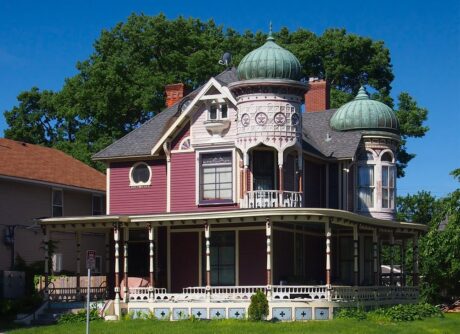By EMMA HESS, Community Journalist-in-Training
50.5% of the homes in Phillips were built before 1939 and that may be a problem for some residents in the Phillips Community. Specifically while older houses may be considered more structurally sound there can be a greater exposure to radon and lead poisoning. Other issues are related to insulation and a lack of air conditioning – and the intersection of these issues given the high levels of air pollution issues in Phillips.

Natalie Bullis, MPH, is the Operations Coordinator for Community Health for Pillsbury United Community. Bullis lived in Phillips for two years as part of her undergraduate degree, in an older home, and she works out of Waite House once a week.
“Phillips has a pretty extensive history of air pollution. And especially in the winter when there can be a lack of insulation, that doesn’t make it any better,” said Bullis.
According to Minnesota Compass, in the Phillips Community, 4062 or 50.5 percent of the homes were built before 1939. The total number of housing units in Phillips is 8046 (as of 2022).
Because of this, Community residents need to be aware of the possibility of radon in the soil, poor insulation in the winter, and the worsening air quality due to wildfires in Canada and other parts of the state as well as I-94.
Healthcare-related resources are available, however, for the Community.
“You may not know that those resources are available. That’s a lot of what we’re trying to work on, providing resources, information, in people’s languages, because we serve mostly East African, Hispanic, and Indigenous populations,” said Bullis.
Marcus Milani is a second year medical student and the co-chair of the Phillips Neighborhood Clinic.
“Last summer during the big wildfires we saw an uptick in asthma-related issues and just breathing difficulties in general. That was a big eye-opening moment for me. There was such a direct link between what’s going on in the environment and people’s health,” said Milani.
While Milani did not speak directly about the older housing, he did note that environmental issues like housing often play a direct role in impacting people’s health.
According to a resource from the Minnesota Medical Association, the state’s oldest and largest advocacy group representing physicians in the state, housing is a social determinant of health. While they discuss several factors related to housing, they also discuss the impacts of housing quality and safety as one health determinant.
That MMA resource reads, “Substandard housing conditions like lead poisoning, water leaks, poor ventilation, mold, low/high temperatures and more, all lead to poor health. These low-quality homes contribute to health issues such as infectious and chronic diseases, injuries, poor nutrition and mental disorders.”
Community members seeking to advocate around housing issues can reach out to community organizations including Homes For All – Minnesota at https://homesforallmn.org/.
Emma Hess is a senior at St. Catherine University. She is an elementary education major and has been a part-time caregiver for the elderly since 2021.









